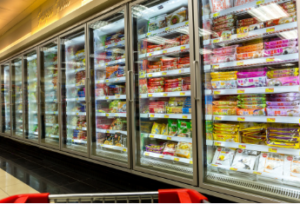How to Choose a Frozen Food Importer
Importing frozen foods requires finding an importer to meet all your needs, from regulatory compliance and food safety to packaging and customer service.
 Additionally, a plan must be created for your future business venture that encompasses demand, supply, inventory management and financials.
Additionally, a plan must be created for your future business venture that encompasses demand, supply, inventory management and financials.
- Regulatory Compliance
As a frozen food importer company, you must register with FDA and provide prior notification of every incoming shipment to them via the Automated Broker Interface (ACS) or FDA’s website, filling in all the necessary fields. Furthermore, before arrival at ports of entry, you should obtain a Prior Notice Confirmation Number issued by them for each shipment you register as an import.
The FDA’s domestic food program relies on point-of-entry inspections to ensure imported foods are safe, wholesome and free from contaminants such as microbes, chemicals and physical hazards.
When purchasing foods of non-animal origin, it is vitally important that the country of export contains accredited laboratories by EU authorities – either private laboratories or governmental laboratories authorised to conduct tests for compliance with European Union rules.
- Food Safety
As a frozen food importer company, your responsibility is to ensure the products you transport and distribute are safe. It requires adhering to stringent hygiene, sanitation, and handling standards along the cold chain and employing appropriate refrigeration and temperature control methods.
Frozen foods can be stored safely for extended periods when properly handled and kept at low temperatures, although their quality may deteriorate gradually over time.
Foodborne illness can arise if bacteria are not killed through freezing and thawing, making proper thawing essential to food safety. Thawing can occur within a refrigerator (0-4 degrees C), under cold water or using a microwave oven.
Listeria monocytogenes can quickly grow and cause illness at temperatures as low as 42 F, posing a real threat to pregnant women, the elderly and those with weak immune systems.
Cold food must remain below five degC and frozen foods below -15 degC to prevent bacteria growth in food products. You can achieve this goal by ensuring your refrigerator or freezer is functioning well, using accurate thermometers, and periodically checking temperatures.
At your company, it is also vital that a strong culture surrounding food safety exists. It means promoting and communicating safe practices regarding food preparation and storage, training staff members, and performing inspections of facilities and employees.
Importing food requires compliance with local food laws; for instance, this may mean getting approval from the appropriate authority before selling certain products.
Imported meat and poultry should be protected from pesticides and other harmful chemicals and properly labelled to indicate their source.
- Packaging
Packaging frozen food importer company products is integral to their manufacture, protecting them from extreme temperatures while maintaining their quality and flavour.
Food-grade plastic packaging is widely used for packaging fresh fruits, vegetables, meats and seafood, desserts and baked goods, protecting them from exposure to air, dust and moisture contamination.
Based on the product, frozen food packaging may contain plastic, cardboard and laminated paper. Insulation with various coolants allows it to withstand different temperatures while explicitly designed to withstand these environments.
Polyolefin shrink films are among the most reliable and flexible packaging materials for frozen food. Ideal for packaging a range of products, these films are often found in foil trays or pans featuring cardboard or wax-coated toppers for maximum efficiency.
Aluminium containers are another popular option for frozen food packaging, often used for packaging lasagna, macaroni and Salisbury steak dishes. While aluminium may be bulkier for smaller packages than its alternatives, its lightweight nature usually allows it to be shipped without issue.
Glass packaging of frozen foods may also be considered, although less commonly. While heavy and more expensive than some materials, glass helps preserve product integrity – it makes an excellent choice for consumers seeking to maintain the taste of frozen meals.
Regarding frozen food packaging, the main priority should be sturdy materials that keep food at an even desired temperature for extended periods. Furthermore, packaging must also be non-toxic in contact with food items.
Your packaging must also be recyclable, biodegradable or compostable if possible; this helps minimise environmental impact while still meeting sustainability goals and offering quality food to your customers.